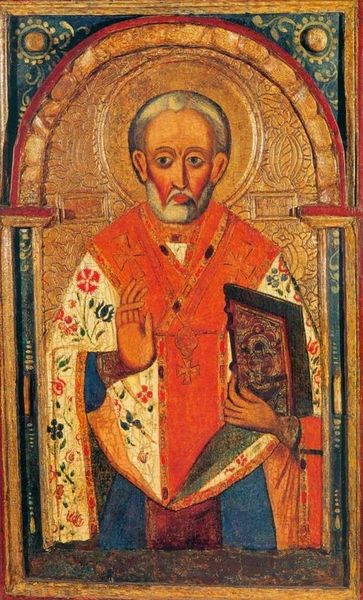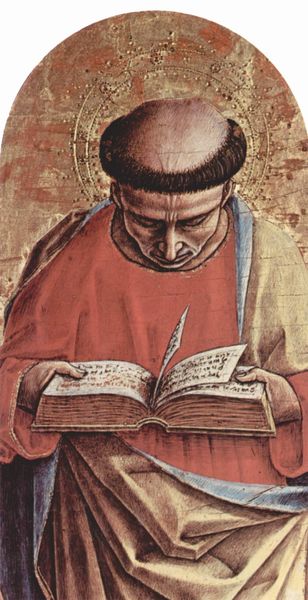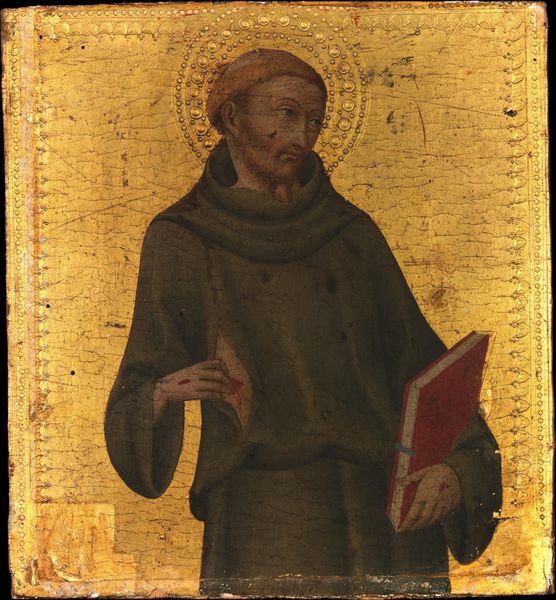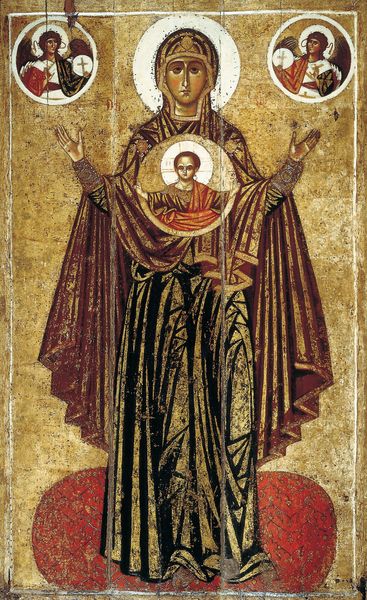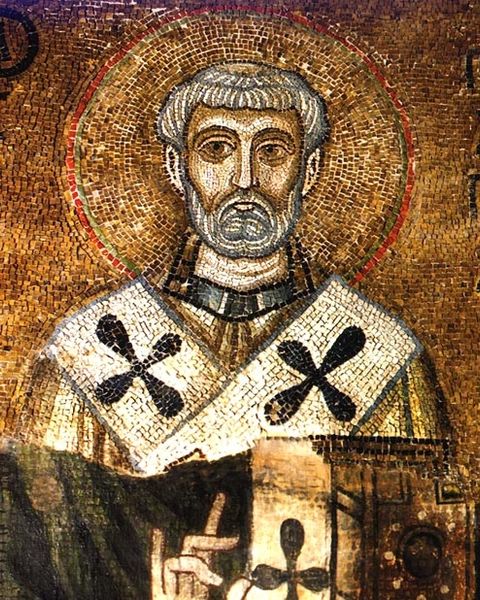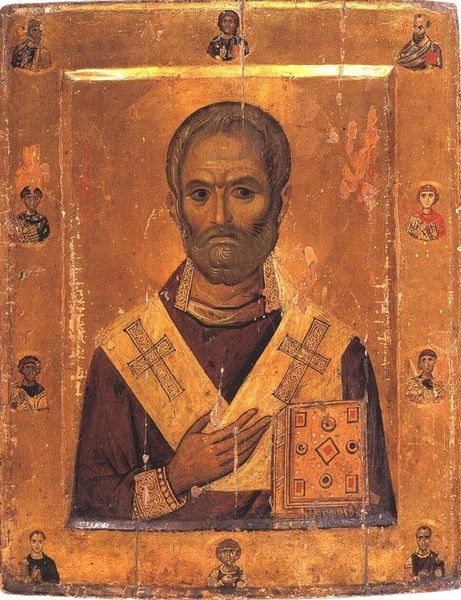
panel, tempera, painting
#
portrait
#
medieval
#
panel
#
tempera
#
painting
#
christianity
#
history-painting
#
italian-renaissance
#
early-renaissance
#
portrait art
Dimensions: 84 x 54 cm
Copyright: Public domain
Curator: Here we have "St. Stephen" created around 1325 by Giotto. You can see it here at the Museo Horne in Florence. Editor: Hmm, he has such a serene, almost aloof expression. It's a portrait, certainly, but also feels like a gateway into something… transcendent? And the gold—it shimmers even in reproduction. Curator: Gold leaf was a signature of the period, of course. Symbolizing divinity, paradise. And you're right to notice the portrait aspect. Though clearly stylized, Giotto strove for naturalism. His figures possess weight, volume, unlike the more flattened depictions common beforehand. Consider how revolutionary it was, the humanity he invested in sacred figures. Editor: So, less an ethereal representation and more a...person? A humanized saint. What strikes me are the textures: the crisp linen of his garment, the brocade's rich patterning, even the subtly rendered skin tones. It feels so tactile. But beyond that, I can't help wondering about the context of making religious art in that period, like who commissioned it, and where might it have originally been displayed? Curator: Almost certainly a private chapel or family altar. Commissions then were frequently acts of pious display and social positioning. To have a Giotto was a mark of considerable wealth and refined taste. Think about it: This image served both as an object of veneration, and as a testament to the commissioner’s power. The church itself was heavily embedded in the economic system. The line between piety and power play becomes really blurred. Editor: It does bring into question the politics involved when viewing religious artifacts today, knowing their background can so heavily alter how one receives it. Although I think the painting still gives off that ethereal feel even when it’s secularised within an exhibit such as this. Curator: Exactly, and perhaps we should remember that "St. Stephen" is also about Giotto’s legacy: How he wrestled with tradition, and in doing so, transformed our very understanding of what it meant to portray the divine. What does sacred mean today? What did it mean then? Editor: Indeed. So much to ponder, gazing into Stephen's serene, almost haunting eyes. Thank you for pointing this out, curator.
Comments
No comments
Be the first to comment and join the conversation on the ultimate creative platform.




